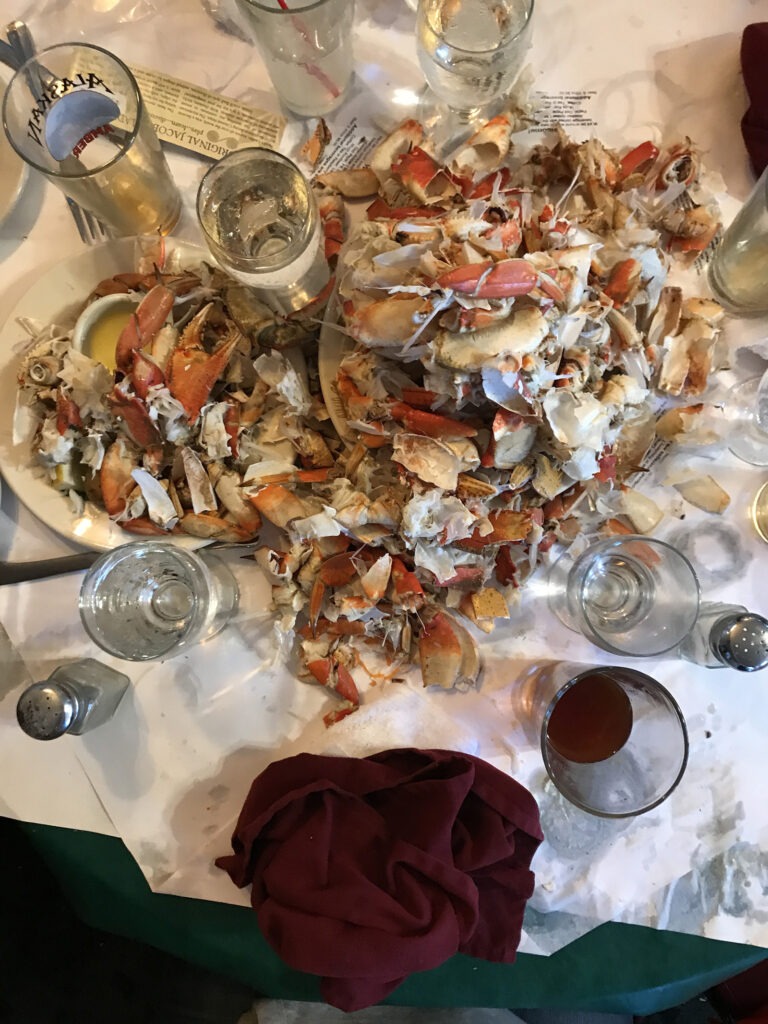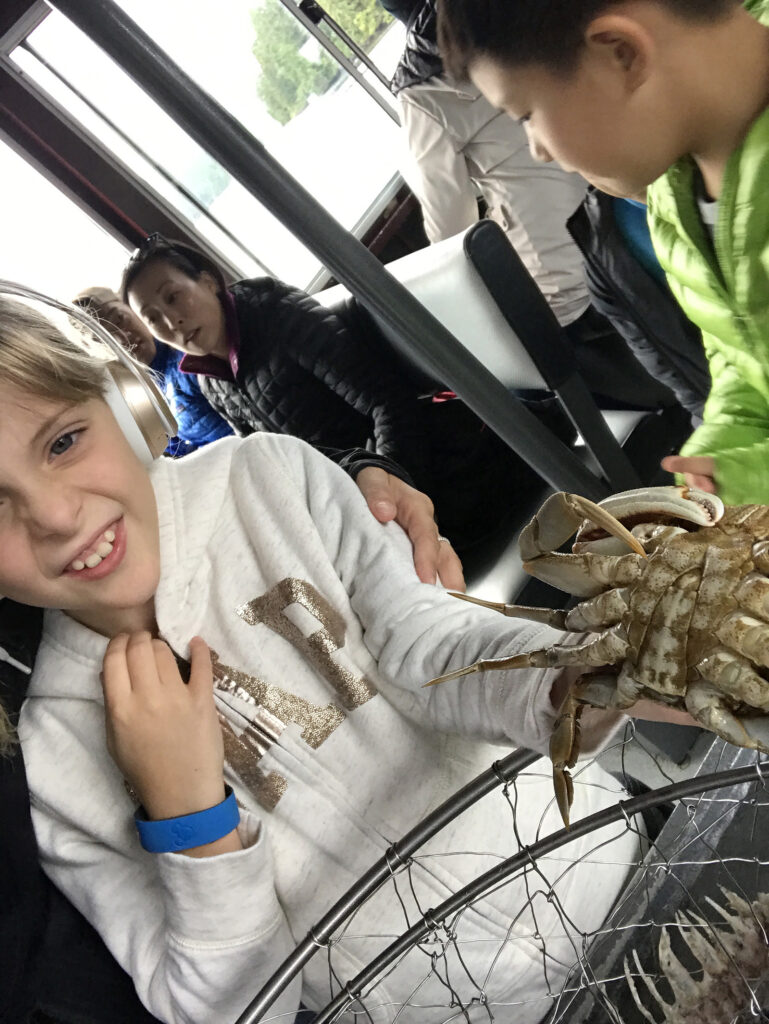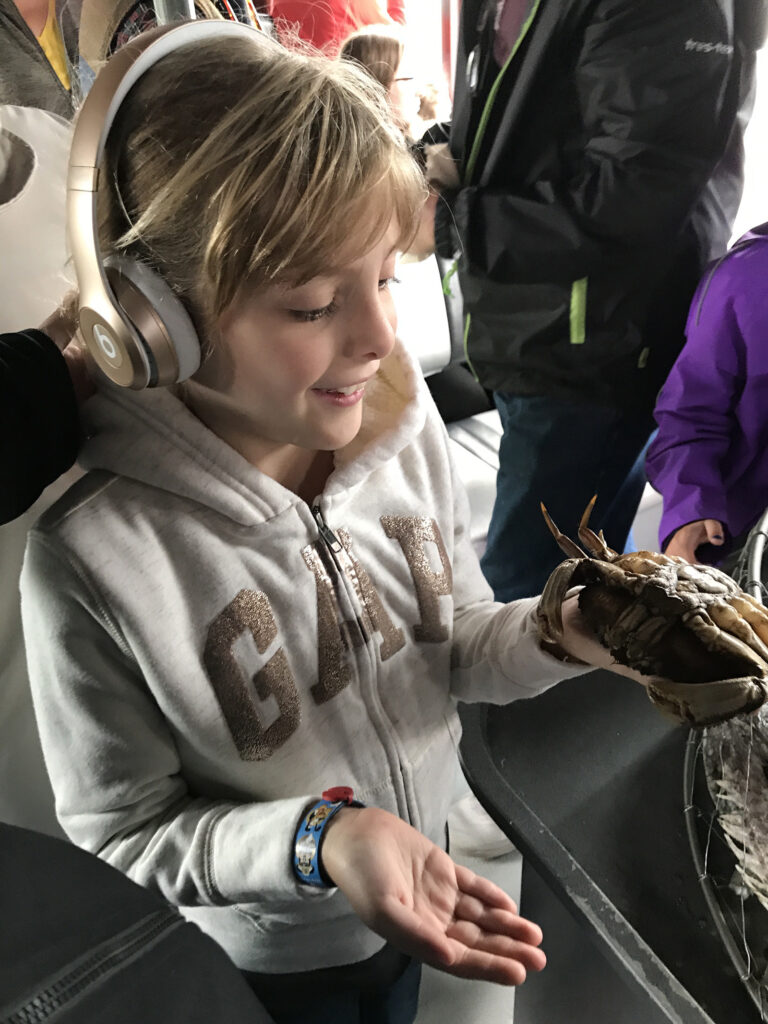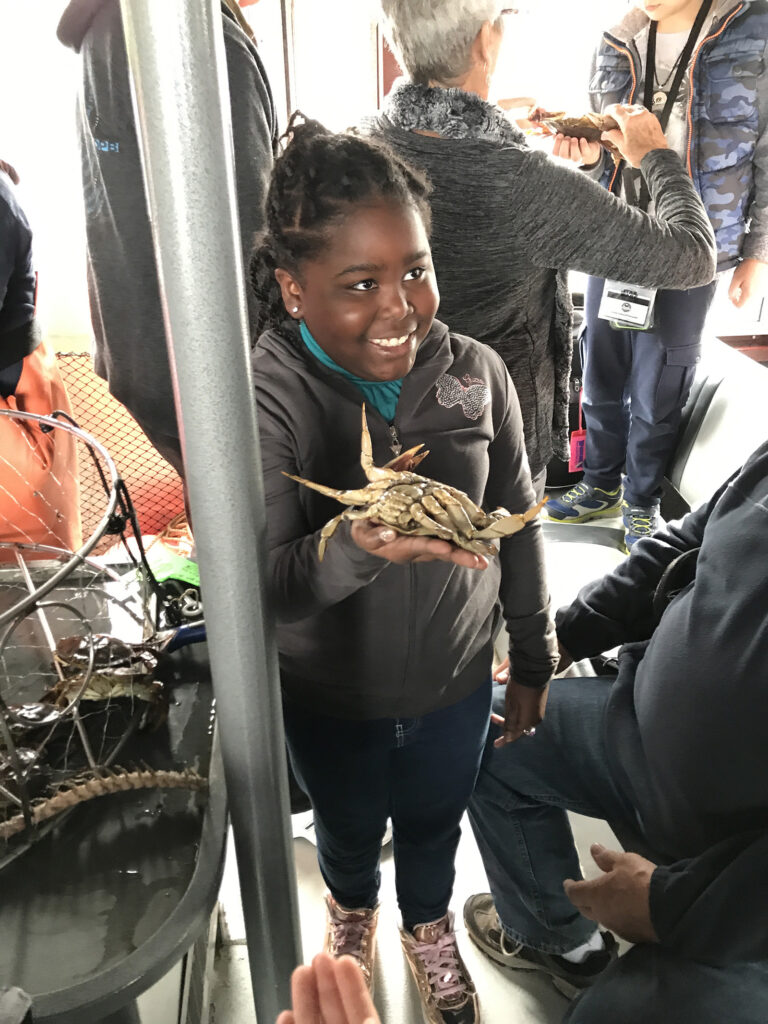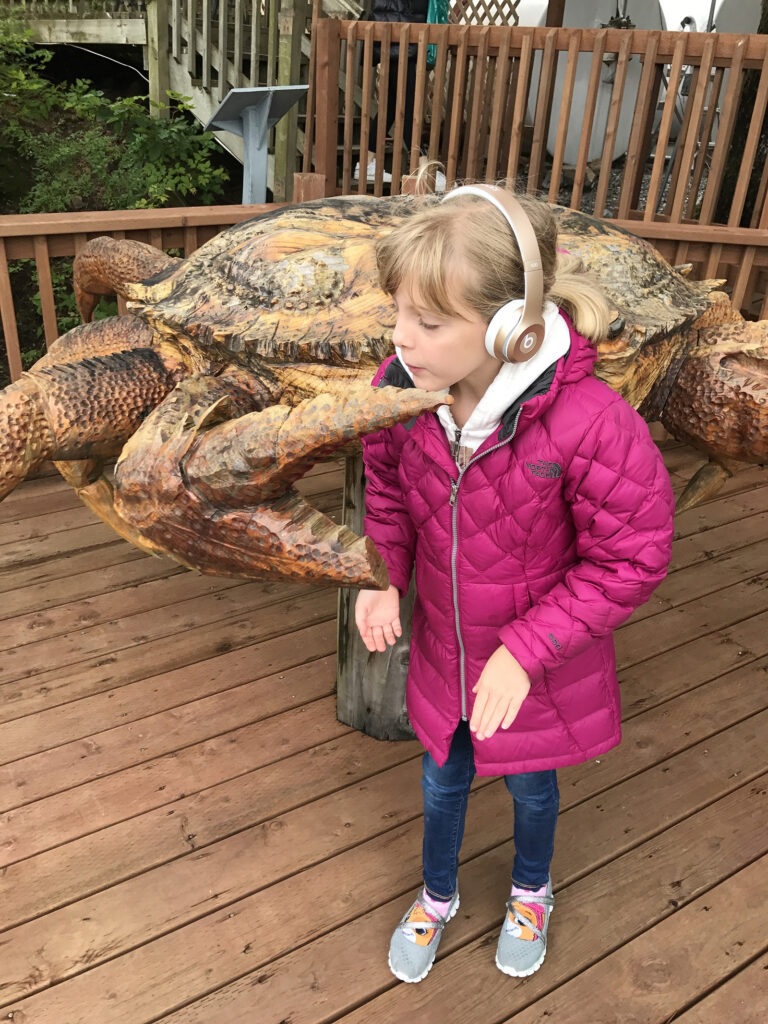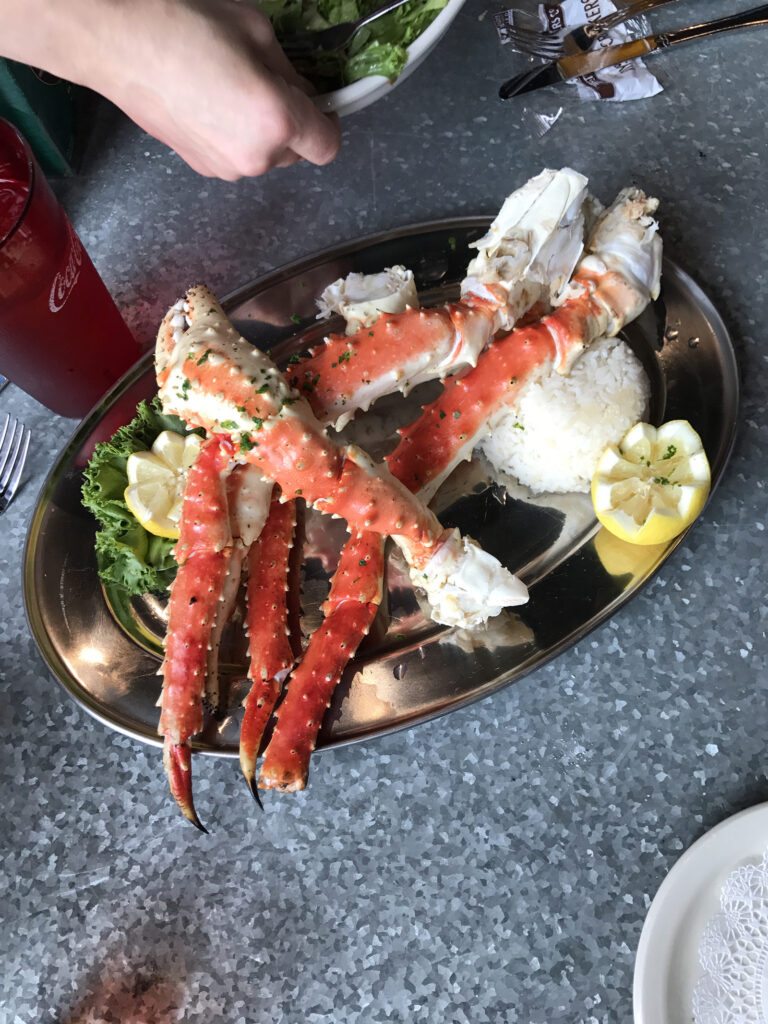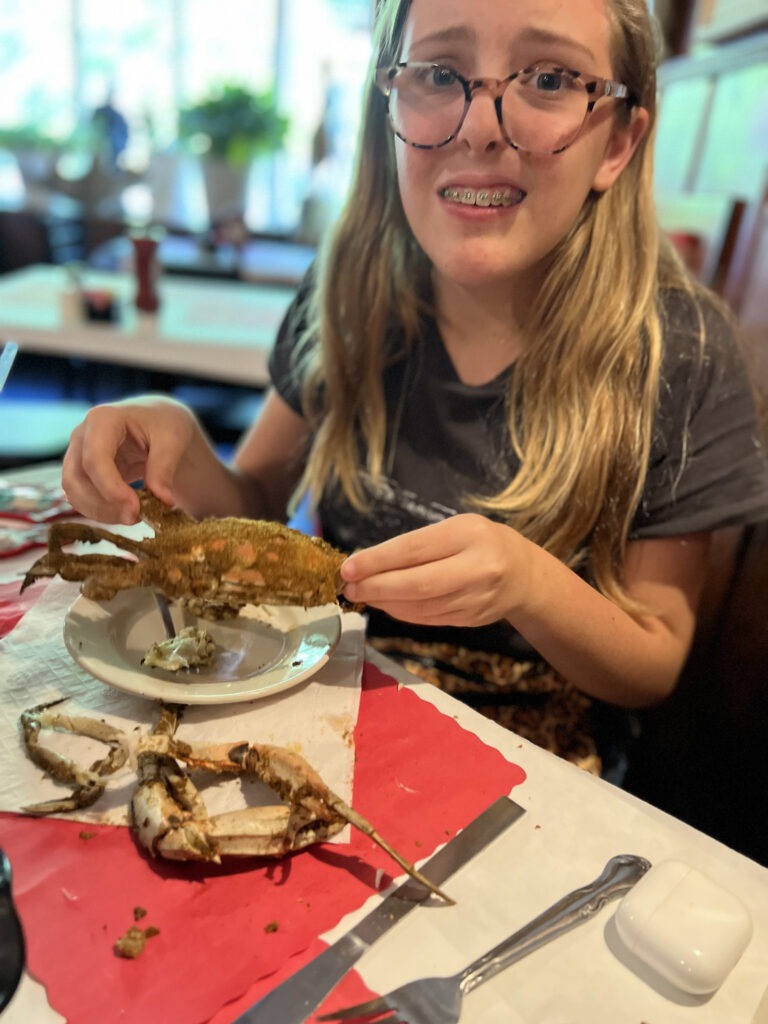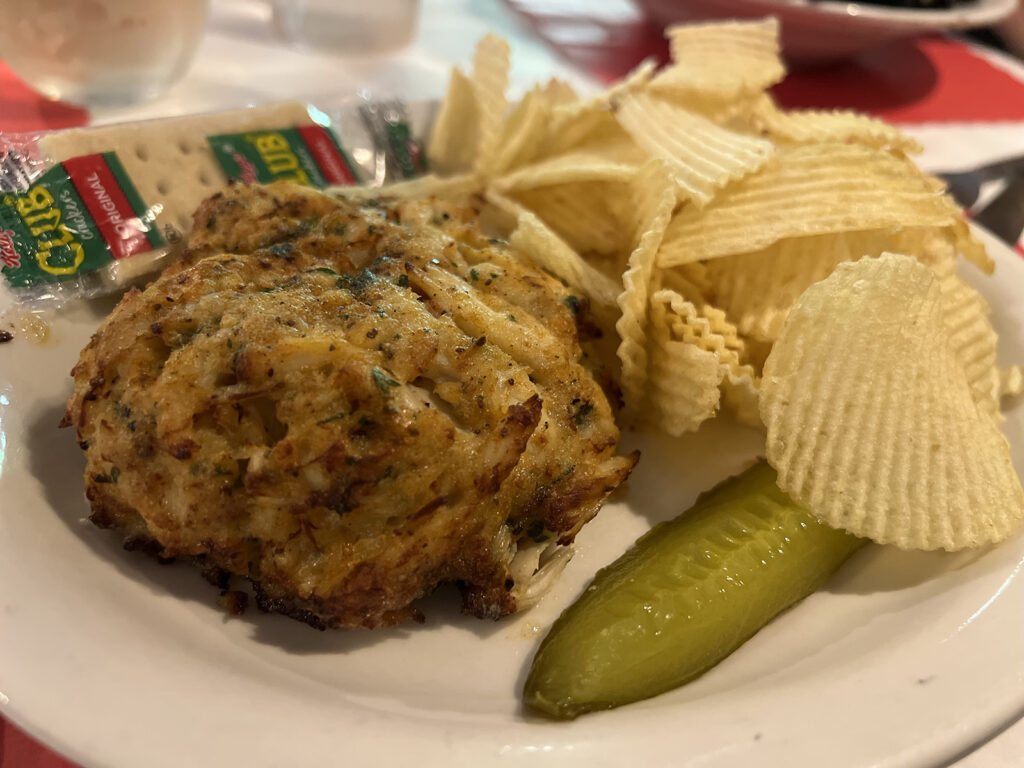A Crabby Adventure: Exploring Alaskan King Crab, Dungeness Crab, and Maryland Blue Crab
Crab has become a favorite in our family’s culinary adventures, especially for Avery, who loves the excitement of trying different varieties. Over the years, we’ve experienced some of the most iconic types of crab in the U.S.—from pulling up pots of Alaskan King Crab in Alaska to cracking open Maryland Blue Crab on the East Coast. For families, especially those navigating food sensitivities or hesitancy to try new foods, crab offers a wonderful opportunity to explore new textures and flavors in a fun and interactive way.
Here’s our crab-filled journey, along with tips for families who might want to dive into this adventure too!
What Makes Crab a Great Food to Try?
Crab offers:
- Variety: Each type of crab has a distinct flavor and texture, from the sweetness of King Crab to the bold seasoning of Blue Crab.
- Interactive Eating: The process of cracking shells and picking meat makes eating crab a hands-on experience, which can engage kids and help ease hesitancy.
- Simple Preparation: Crab can be steamed, boiled, or baked, often served with minimal seasoning, making it a flexible option for those with food sensitivities.
Our Crab Adventures
1. Alaskan King Crab
Our crab journey began in Ketchikan, Alaska, in 2017 during a Disney cruise. We joined a crabbing excursion, where we pulled up pots brimming with enormous Alaskan King Crabs. Afterward, we enjoyed a feast featuring the freshest crab imaginable.
Why It’s Great for Families:
- King Crab is mild and sweet, which can appeal to those who are hesitant about stronger seafood flavors.
- The large size of King Crab legs makes the meat easy to access for kids or anyone with fine motor challenges.
Family Tip:
Start by offering the crab meat plain, without butter or seasoning, to see how your child responds. For sensory-friendly eating, allow them to use their hands to explore the texture first.
Our Rating: 🌟🌟🌟🌟🌟
2. Dungeness Crab
As residents of the San Francisco Bay Area, Dungeness Crab has been a regular treat for us, especially during crab season. We’ve enjoyed it at local restaurants along the coast, prepared in everything from crab salads to traditional crab boils.
Why It’s Great for Families:
- Dungeness Crab has a delicate, nutty flavor that’s less intimidating than other types of seafood.
- It’s often served cracked and ready to eat, which reduces the effort required at the table.
Family Tip:
Crack the crab beforehand and serve small portions with familiar dips like plain butter or a favorite sauce. This can help kids ease into trying something new.
Our Rating: 🌟🌟🌟🌟
3. Maryland Blue Crab
On our 2023 East Coast road trip, we had our first taste of Maryland Blue Crab at Schultz’s Crab House. Steamed whole and heavily seasoned with Old Bay, the Blue Crab was a completely different experience—messy, flavorful, and fun!
Why It’s Great for Families:
- The bold flavor from Old Bay seasoning adds excitement for adventurous eaters.
- The hands-on process of cracking shells can be a sensory activity for kids.
Family Tip:
If strong seasonings are overwhelming, ask for steamed crabs without seasoning or scrape off excess before serving. Pair it with a familiar side dish to make the meal more approachable.
Our Rating: 🌟🌟🌟🌟🌟
Tips for Autism Families Trying New Foods
- Introduce Gradually:
- Start by letting your child explore the texture and smell of crab before eating.
- Offer a small bite alongside a familiar food they already enjoy.
- Simplify the Flavors:
- Avoid heavy seasoning or sauces at first. The natural sweetness of crab can be appealing on its own.
- Make It Fun:
- The interactive process of cracking crab can be engaging and help kids feel involved in the meal.
- Turn it into an adventure by sharing stories about where the crab comes from or how it’s caught.
- Offer Alternatives:
- If crab meat feels too unfamiliar, try crab cakes or soups as a gentler introduction.
- Plan for Sensory Sensitivities:
- Provide wet wipes, a napkin-lined lap, or even gloves for kids who dislike the feeling of sticky or messy hands.
Our Crab Ratings
| Crab Type | Flavor | Size | Experience | Overall Rating |
|---|---|---|---|---|
| Alaskan King Crab | Sweet, tender | Massive | Pulling crab pots in Alaska | 🌟🌟🌟🌟🌟 |
| Dungeness Crab | Delicate, nutty | Medium | Local dining during crab season | 🌟🌟🌟🌟 |
| Maryland Blue Crab | Bold, seasoned | Small | Traditional crab feast with Old Bay | 🌟🌟🌟🌟🌟 |
Final Thoughts
For us, crab has become more than just a meal—it’s an adventure that connects us to local cultures and traditions. Whether we’re pulling up pots in Alaska, cracking open shells on the West Coast, or diving into a seasoned Maryland feast, each experience has been unique and delicious.
For families navigating food sensitivities or hesitancies, crab can be a great food to explore. With its mild flavors, interactive eating, and flexible preparation, it offers something for everyone.

